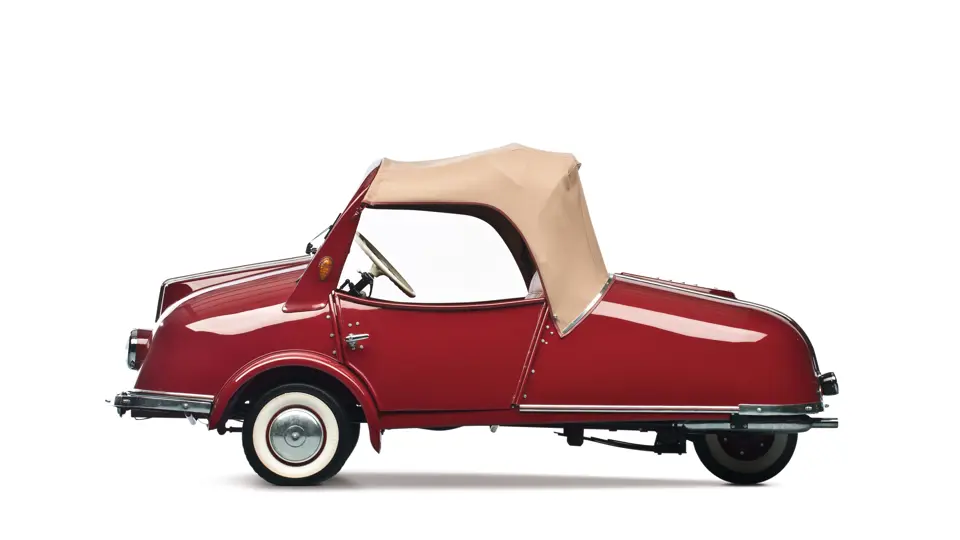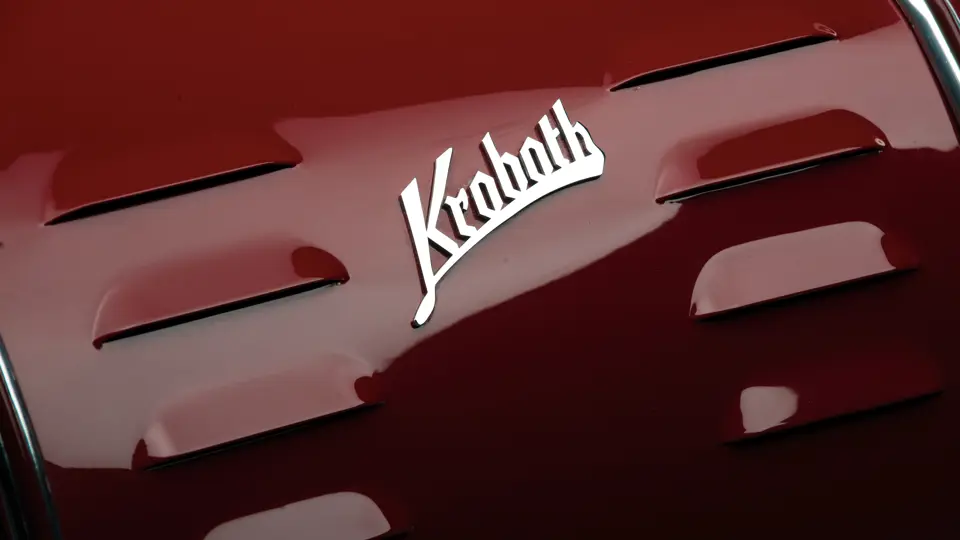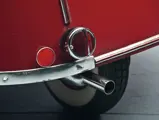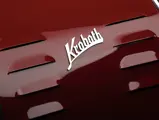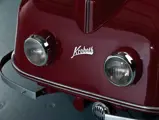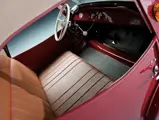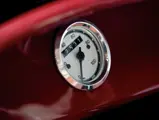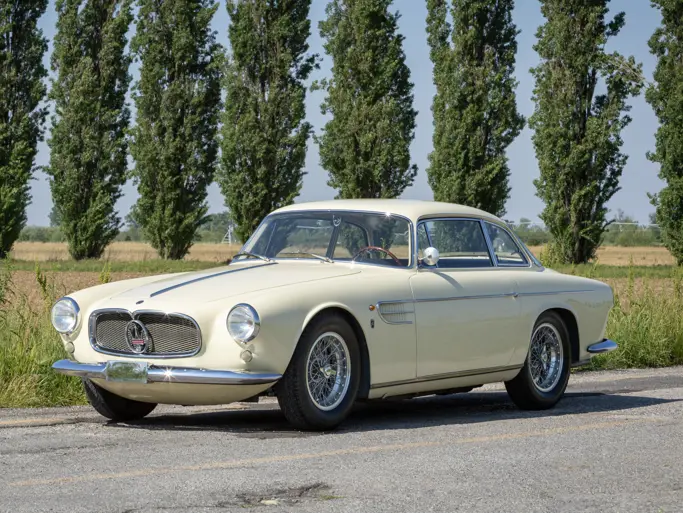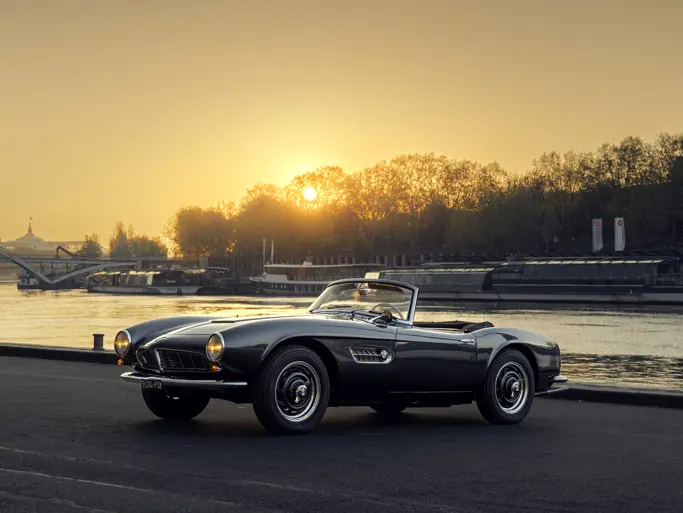A show quality restoration of a Bavarian microcar.
SPECIFICATIONS
Manufacturer: Fahrzeug und Maschinenbau Gustav Kroboth
Origin: Seestall, Bavaria, Germany
Production: 55
Motor: Fichtel & Sachs 1-cyl, 2-stroke
Displacement: 175 cc
Power: 9 hp
Length: 9 ft. 2 in.
Identification No. 5415
Far from being an amateur upstart, Gustav Kroboth had already been a car constructor of note in his native Bohemia in pre-war Czechoslovakia. He had built 150 examples of his BMW Dixi-like “Favorit,” with financial assistance from a thread factory owner, at his plant in Šternberk. In 1945, the Czechs expelled the mostly German-speaking population from the Sudetenland, and Kroboth found himself in neighboring Bavaria. Here, he scrounged parts from abandoned military vehicles and, with an ingrained resourcefulness, built wooden toys, poppy seed grinders, and equipment for the local farmers. The series-production of poppy seed grinders produced enough income to finance his next project. From 1951 to 1955, he produced his iconic bell-nosed scooter, which closely resembled the Ski-Doo snowmobile and was powered by Sachs motors.
The summer of 1953 was a complete washout, with record amounts of rain; thus, resulting in a serious detrimental effect on the German motorcycle industry. Buyers now reconsidered their potential two-wheeler purchases and looked towards the three-wheelers, which offered a modicum of weather protection. Hence the 1953 Messerschmitt slogan: “Go scootering despite the rain.”
Unlike the huge motorcycle firms, which steered like the Titanic, the small two-wheeler firms found it much easier to change direction, and Kroboth had his “Allwetter-Roller” (all-weather scooter) ready sooner than most. He used his pre-war experience with central-tube frames to build his prototype. It used transverse leaf springs up front and longitudinal ones on both sides of the Sachs two-stroke at the rear. Steering gear was brought in from ZF in Friedrichshafen, and the mechanical drum brakes were from ATE. The steel bodywork of the prototype was hammered out by local firms in the rounded idiom of the day. Tilting the bench seat gave access to two storage compartments on either side of the motor. The column-mounted shifter was also high fashion for the times.
The nearby Bavarian mountains provided plenty of winding roads for testing, and the little three-wheeler soon accumulated 20,000 test kilometers. The car was completely dismantled and examined, and design alterations were made. A bank loan provided for the building of a small factory. August 1954 saw the first deliveries to customers. Kroboth insisted that it was not a replacement for a “real” car, but that it was a motorcycle that had ease of maintenance along with car-like comfort. The production model was now fitted with small doors and a windshield courtesy of Volkswagen. Side-screens and a heater could be added for all-weather driving. Either the Sachs 175 motor or the ILO 200 were available, with an optional electric start. The literature touted the real car steering wheel as opposed to the Messerschmitt’s handlebar. “There was hardly a car with as much room,” and it was noted that the Kroboth driver must be content with a 45–50 mph top speed.
Preparations for series production had included a major financial outlay for the purchase of body-stamping tools from Esslingen. The small but steady output of cars afforded him even more bank credit. Kroboth investigated every opportunity for finding a buyer for a production license, or even a sponsor. He spoke to optimistic motorcycle dealers, but the motorcycle companies they were representing were failing as well. Talks with the large Maico firm and a Dutch bicycle firm came to naught. The reality was that the public wanted real cars, not three-wheelers trailing a cloud of two-stroke smoke. The company assembled its last vehicles in the summer of 1955 before the machine tools and property were sold to cover the accumulated debt, and Gustav Kroboth found a new career as a driving instructor. This happy little example has been fully restored and is liveried in red with a tan top and interior. Wonderfully presented, it exhibits marvelous fit and finish throughout and is certainly a show contender.





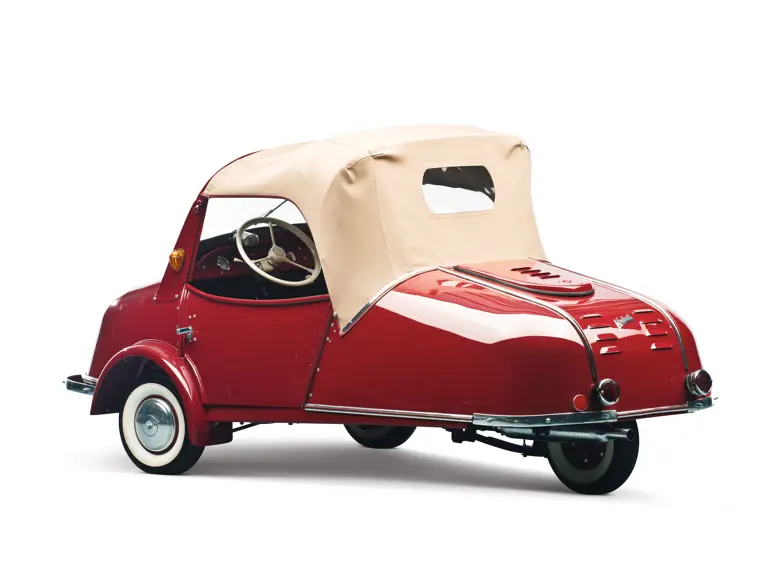



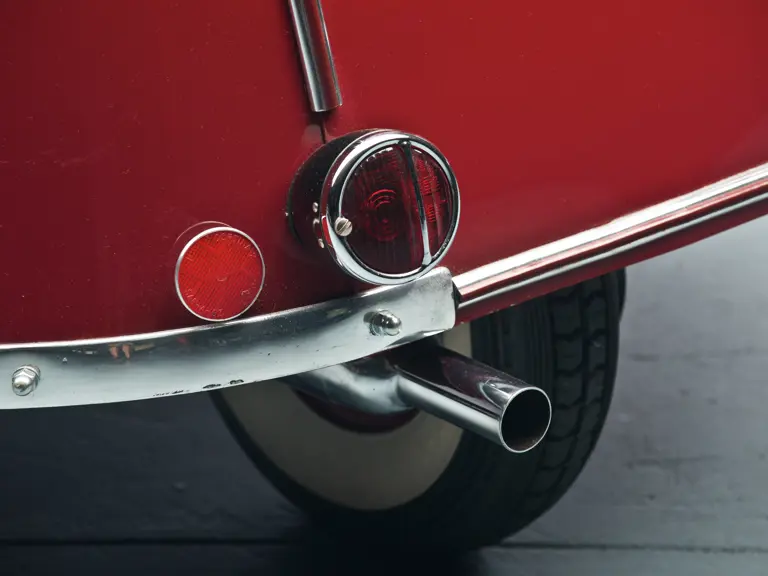
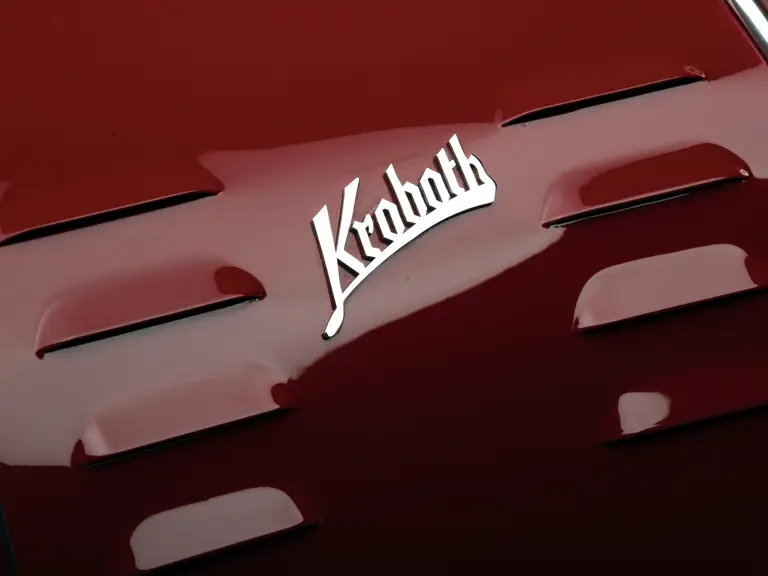
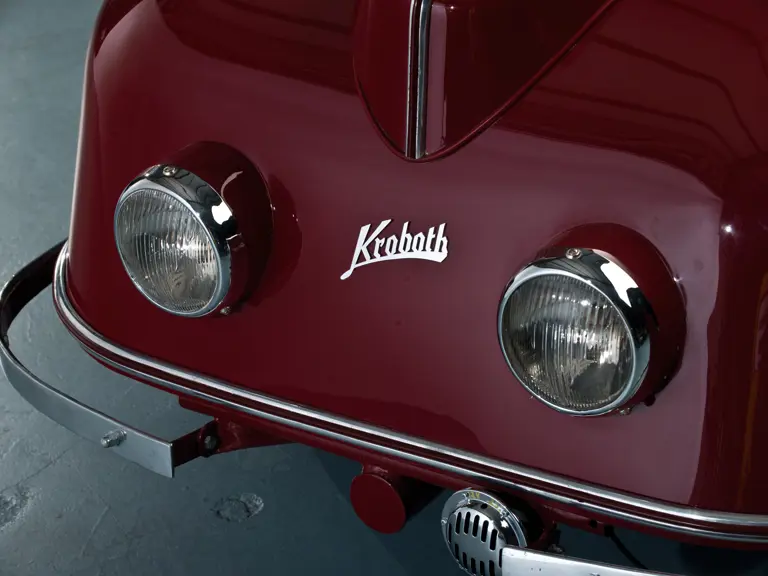


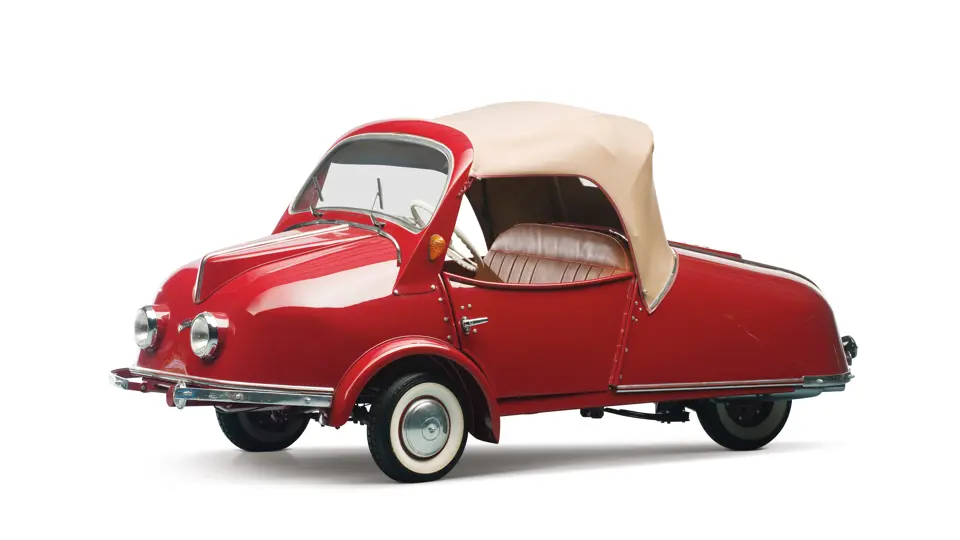
 | Madison, Georgia
| Madison, Georgia
